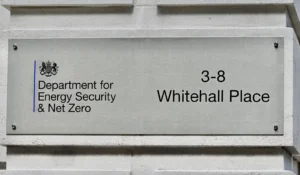Hydrogen fire engine and ambulance to be trialled in Oxfordshire with refuelling from Fuel Cell Systems

Fuel Cell Systems Ltd (FCSL) has been awarded an £825,500 contract by Oxfordshire County Council to provide hydrogen refuelling infrastructure for the Hyer Power project – a UK programme developing hydrogen-powered emergency and specialist service vehicles.
The wider £8 million project is led by hydrogen retrofit specialist ULEMCo and is funded through the Advanced Propulsion Centre (APC) and Innovate UK.
Oxfordshire County Council is managing the infrastructure delivery.
Hyer Power will see a hydrogen-powered fire engine, ambulance, and highways maintenance vehicle deployed in service, using fuel cell systems to extend the range of battery-electric drivetrains and support onboard electrical loads.
The aim is to assess how hydrogen can support zero-emission operation in vehicle types where charging downtime or limited range could restrict deployment.
On-site production and mobile dispensing
Under the contract, FCSL will deliver a full hydrogen refuelling setup comprising green hydrogen production and dispensing, operated by its team in Hungerford.
Hydrogen will be generated using the company’s HyPro electrolyser, a modular alkaline system designed for compact deployment and integration with renewable electricity.
It produces hydrogen at pressures suitable for storage or compression, depending on local requirements.
Dispensing will be handled by the HyQube, a containerised refuelling unit with integrated storage, compression and cooling.
It supports both 350-bar and 700-bar refuelling and has been used previously in UK hydrogen trials with Toyota, ZeroAvia, South Wales Bus, and Bristol Airport.
The combined system enables a self-contained refuelling capability that can be sited on council land, requiring no connection to existing fuel infrastructure.
The approach allows localised hydrogen deployment without the need for major capital investment in pipelines or centralised production.
Hybrid architecture for demanding roles
The Hyer Power vehicles will use a battery-electric architecture supplemented by a hydrogen fuel cell system, with the fuel cell acting as a range extender and power source for specialist onboard equipment.
For emergency and utility vehicles with unpredictable duty cycles, this setup is intended to reduce reliance on charging infrastructure while maintaining zero tailpipe emissions.
According to ULEMCo, the vehicles will be based on existing platforms and modified to accommodate the hydrogen system without compromising operational performance.
The Hyer Power project is one of several government-backed initiatives exploring how hydrogen can support decarbonisation in segments where battery-electric vehicles face practical limitations.
Dr Lee Juby, CEO of Fuel Cell Systems, said the company’s refuelling systems have been in use since 2017, including in off-grid and trial deployments: “We’re pleased to contribute our experience to the Hyer Power project and support Oxfordshire’s efforts to enable zero-emission public sector transport.”
While the immediate aim is to support the demonstration vehicles, Oxfordshire County Council sees potential for the infrastructure to support a wider hydrogen rollout across its heavy-duty fleet, subject to future funding and demand.









